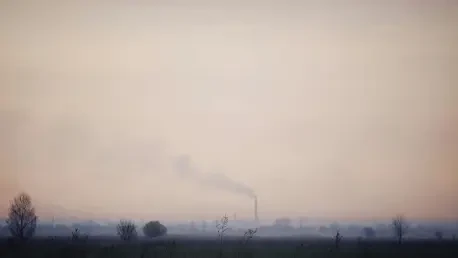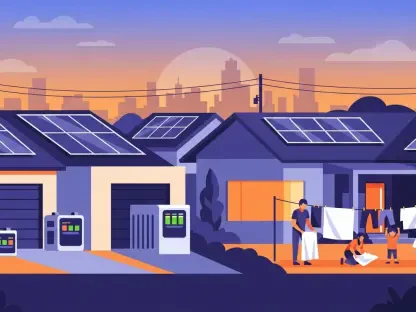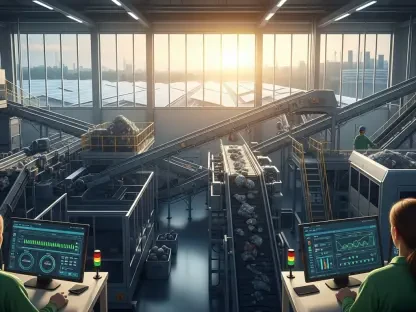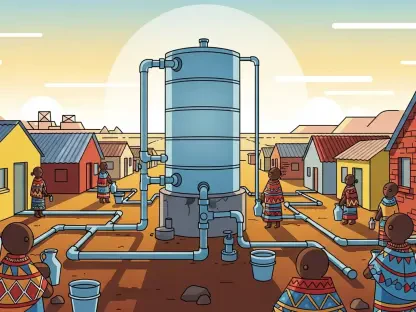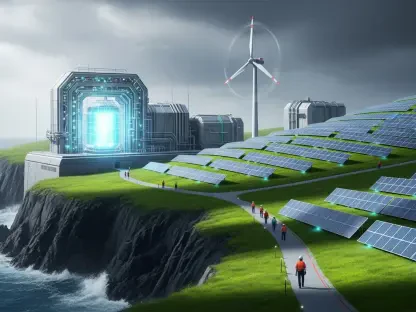Recent reports from the European Environment Agency (EEA) reveal a striking duality in the state of air quality across the continent, where remarkable progress over the past two decades stands in stark contrast to lingering environmental and social challenges that continue to impact millions. While emissions of major pollutants have plummeted thanks to stringent regulations and technological innovations, the air that millions breathe still poses significant health risks. This complex landscape of achievement and unresolved issues paints a picture of a region at a crossroads, balancing the benefits of cleaner skies against the persistent threats of pollution from specific sectors and disparities in exposure. As Europe pushes toward ambitious health and environmental targets, the journey ahead demands both reflection on past successes and a renewed focus on innovative solutions to address the hurdles that remain.
Progress in Air Quality Over the Years
Remarkable Reductions in Key Pollutants
Significant strides have been made in curbing air pollution across Europe since the early 2000s, driven by a combination of stricter policies and advancements in technology. Emissions of major pollutants like sulfur dioxide have dropped by an impressive 85%, while nitrogen oxides have decreased by 53%, and fine particulate matter, known as PM2.5, has seen a 38% reduction. Additionally, non-methane volatile organic compounds have fallen by 35% over the same period. These declines are largely the result of improved vehicle emission standards, the adoption of cleaner fuels, and a gradual shift away from coal-based energy production. Industrial upgrades have also played a pivotal role, ensuring that factories release fewer harmful substances into the atmosphere. This sustained effort reflects a continent-wide commitment to enhancing environmental conditions, with tangible outcomes that underscore the effectiveness of coordinated regulatory frameworks.
Health Benefits from Cleaner Air
The impact of these reductions on public health cannot be overstated, as the decline in pollutant levels has directly translated into fewer premature deaths. Exposure to PM2.5, a particularly dangerous pollutant due to its ability to penetrate deep into the lungs, has been linked to a 45% drop in associated fatalities, while deaths tied to nitrogen dioxide (NO2) exposure have decreased by 53% over recent decades. This progress highlights the life-saving potential of environmental reforms, as cleaner air has alleviated the burden on healthcare systems and improved overall quality of life for millions. However, despite these gains, air pollution remains the top environmental health risk in the region, with projections suggesting that even if ambitious targets for 2030 are met, significant health challenges will persist. This sobering reality serves as a reminder that while the path forward is clearer, the journey is far from complete, requiring ongoing vigilance and adaptation.
Persistent Challenges and Future Outlook
Agricultural Pollution as a Major Barrier
One of the most formidable obstacles to achieving comprehensive air quality goals lies in the agricultural sector, particularly with ammonia emissions stemming from manure and fertilizer use. Unlike other pollutants that have seen substantial declines, ammonia emissions have only decreased by a modest 17% since the early 2000s, positioning this issue as a critical barrier to meeting the European Union’s zero pollution action plan targets. The EEA has underscored the urgency of this challenge, noting that 21 Member States must implement robust measures to address farming-related emissions by 2030. The complexity of reforming agricultural practices, which are deeply embedded in economic and cultural systems, makes this a far more resistant problem compared to earlier successes in industrial and transport sectors. Tackling this issue will require innovative approaches and widespread cooperation to balance environmental needs with agricultural productivity.
Socioeconomic Disparities in Exposure
Equally concerning is the uneven distribution of air pollution’s burden across different socioeconomic groups, a disparity that has shown little improvement despite overall air quality gains. PM2.5 concentrations remain roughly one-third higher in poorer regions compared to wealthier ones, a gap that has persisted for over a decade. This inequality stems from limited access to cleaner energy sources, modern transportation options, and infrastructure improvements in disadvantaged communities, leaving them more vulnerable to environmental hazards. The absence of specific EU policy targets to address these disparities further complicates the issue, as highlighted by the EEA. Addressing this imbalance will necessitate focused interventions that prioritize equity, ensuring that the benefits of cleaner air are not confined to certain demographics but are shared across all segments of society.
Looking Ahead to Long-Term Goals
Projections for the future indicate that without more aggressive action, around 30% of EU residents could still be exposed to PM2.5 levels exceeding World Health Organization guidelines by 2050. To counter this, the EEA emphasizes the importance of fully implementing existing laws and adopting stricter standards under the revised Ambient Air Quality Directive. Targeted efforts in agriculture, energy, and transport sectors are deemed essential, alongside the introduction of monitoring for emerging pollutants like ultrafine particles and black carbon starting in 2026. These steps aim to provide deeper insights into evolving risks and inform more effective strategies. The road to meeting both near-term and long-term objectives is fraught with complexity, but a commitment to innovation and sector-specific solutions offers a pathway to sustained improvement, ensuring that the gains of the past are not eroded by the challenges of tomorrow.
Reflecting on a Dual Legacy
Looking back, the strides made in enhancing air quality across Europe stand as a testament to the power of regulatory rigor and technological progress, with substantial reductions in pollutants and a corresponding decline in premature deaths. Yet, the persistent issues of agricultural ammonia emissions and socioeconomic disparities in pollution exposure cast a shadow over these achievements, revealing the depth of challenges that linger. The health risks tied to poor air quality, disproportionately borne by vulnerable communities, underscore the urgency of addressing systemic inequities. As attention turns to the future, the focus shifts to actionable measures—strengthening policies, innovating in resistant sectors, and prioritizing fairness in environmental health outcomes. This balanced reflection on past efforts paves the way for a renewed resolve to tackle unresolved hurdles with precision and determination.
